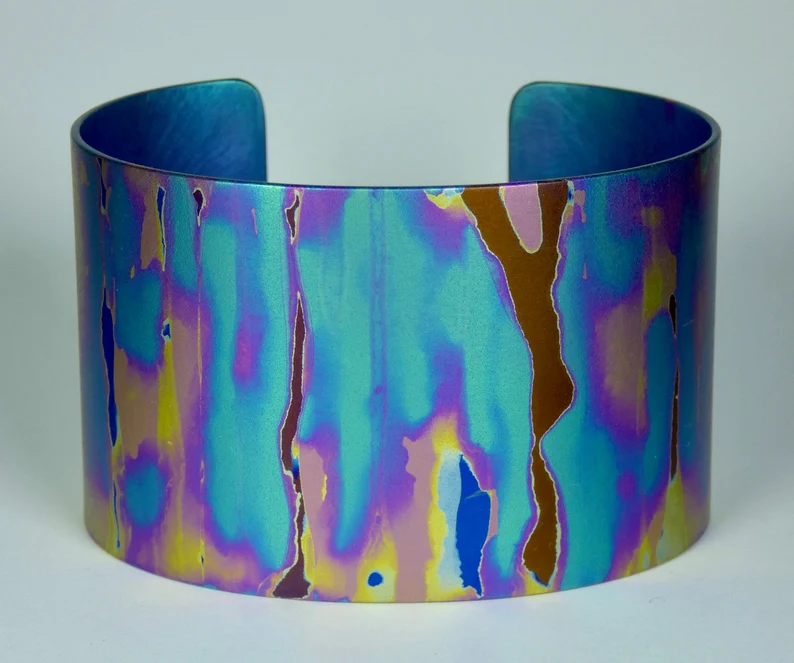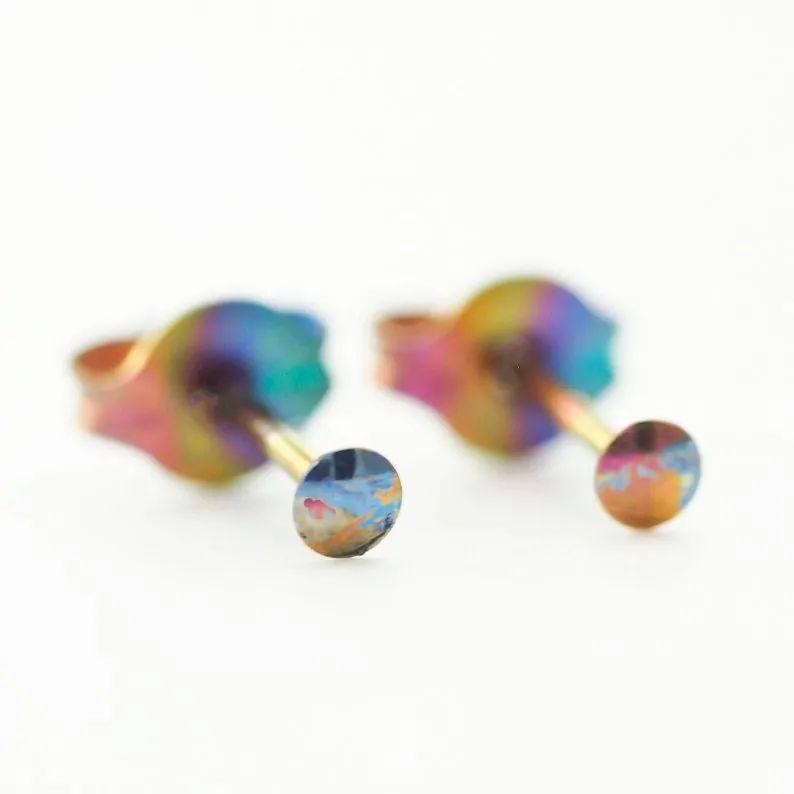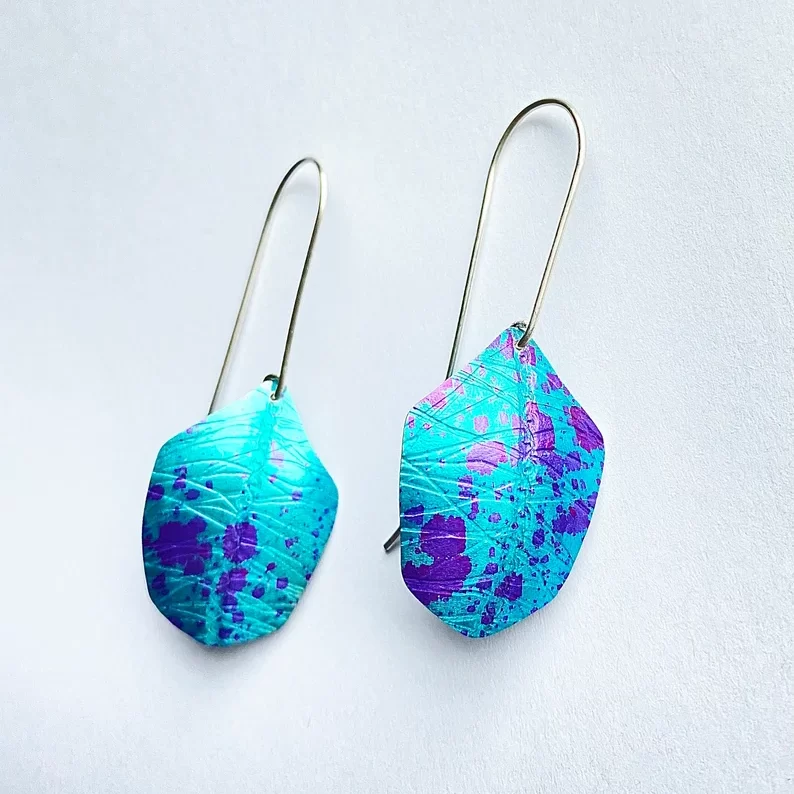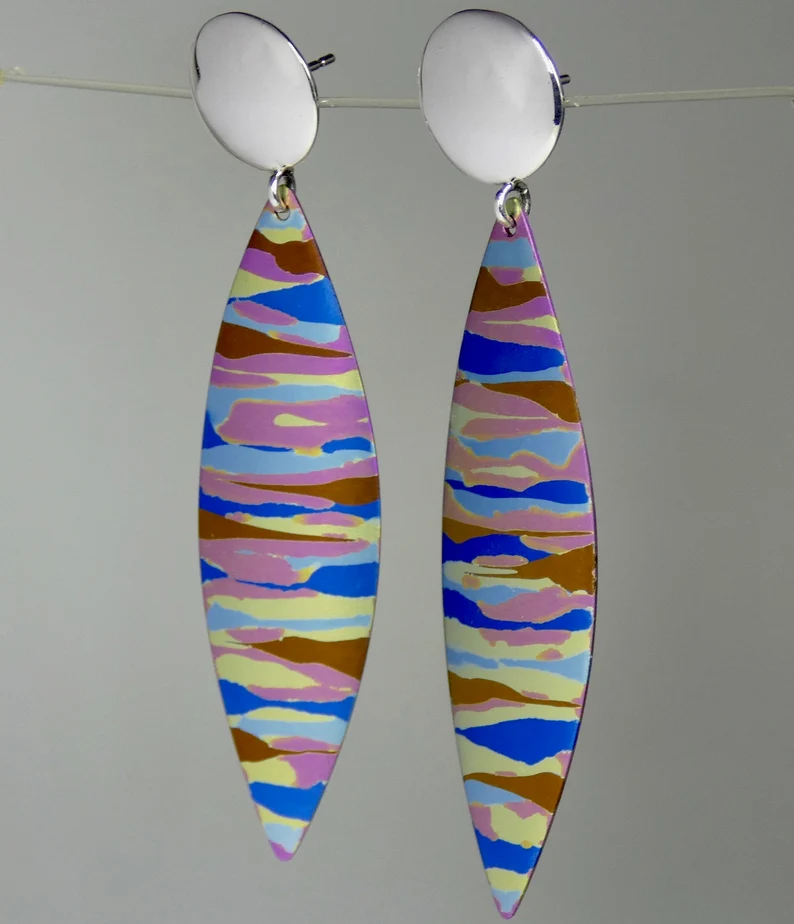
Table of Contents
One of the most important aspects of getting a piercing is choosing a safe metal that won’t cause reactions or allergies. You’ll often see niobium and titanium on the list of safe metals to use for fresh piercings due to their bio-compatible properties.
But if these two metals have been anodized, which they often are, do they still remain safe for piercing jewelry?
Keep reading as we cover this topic in depth. But if you don’t want to stay with us till the end, then here’s a quick overview that summarizes the benefits of anodized titanium and niobium.
Quick Overview of Anodizing Metals

- Increases durability and resistance to corrosion
- Displays beautiful colors
- Unique patterns
- Hypoallergenic and bio-compatible
- Safe to wear (but not with all the metals)
- A smoother surface
What is Anodizing?
Anodizing is an electrochemical process that changes the surface of a metal, making it more durable, resistant to corrosion, and able to absorb dyes.
The thing with anodizing metals is that not every metal has the chemical composition that allows it to be anodized. Some metals just react differently to the process. Metals that can be anodized include titanium, niobium, zinc, aluminum, magnesium, and tantalum. From this list, however, anodized titanium and niobium are suitable for body piercings. Most of the other metals may exfoliate when anodized, meaning that the surface layer can peel off.
During the anodizing process, the metal is heated to a certain degree, which allows a film or coating to form on its surface. The heating process is done by introducing electricity to the metal which results in a permanent surface change.
In the case of titanium and niobium, anodizing causes the natural oxide layer on the surface to thicken. Any surface debris is removed by the process, resulting in a smoother texture. This video gives a quick demonstration of how titanium jewelry changes color during anodization.
How Do Anodized Metals Get Their Colors?

What makes anodized metals so special is the array of rainbow colors that they display without the use of any dyes. Both niobium and titanium can exhibit gold, green, purple, copper, yellow, blue and sometimes even an oil slick effect.
The stunning patterns and hues are all natural, caused by the light interfering with the oxide layer and creates the color. If there was no light during the process, there would be no colors.
Both niobium and titanium anodize in a similar way. During the process a layer of oxide forms on the surface of the metal, which interacts with light and creates an array of iridescent colors.
The colors that the metal displays depend on how thick the oxide is, which in turn depends on the voltage of the current during the anodizing process. This makes the anodizing process a work of art, and sometimes, getting the exact same color again can be tricky.
What About Anodized Aluminum?

Anodizing aluminum can be more complicated than other types of metal. It requires heating, chemicals, and an electric current – somewhat like a plating process. This makes it less available compared to titanium and niobium.
What’s more, anodized aluminum can’t achieve the rainbow colors that titanium and niobium do. It’s usually evenly-colored. The pair of earrings featured above, for example, has an even colored aqua hue, with hand-painted spots.
These two reasons are why we aren’t really focusing on anodized aluminum in this article. However, it is safe to wear and most people find that they don’t have any issues with aluminum jewelry.
Are Anodized Metals Safe to Wear?

Not all anodized metals are safe for piercings, but anodized titanium and niobium are hypoallergenic and safe to wear. They won’t cause skin reaction so allergies of any kind, making them an excellent, bio-compatible option for even fresh piercings.
People worry when they see the lustrous colors of the metal and immediately assume that it’s not safe to wear for fresh piercings. They tend to think it’s a type of plating but unlike plated metals, anodized metals don’t flake or peel. It hasn’t been dyed, plated or coated with any other substance. Even though there are other colors on the surface, the metal is still either titanium or niobium all the way through.
Something to watch out for is metals like stainless steel that have been given a titanium coating. These can be sold as Titanium Anodized but may not be hypoallergenic or safe to wear. Always check this carefully and make sure that the entire piece of jewelry is made of titanium or niobium.
Do Anodized Metals Change Colors?
Over time, you might notice that the vibrant colors of the anodized metal may start to fade. This is merely because the oxide layer is starting to wear off and get thin, exposing the natural color of the metal. However, while it may slowly wear off, it will never flake off. This process is not unsafe and poses no harm to your body.
How to Clean and Care for Anodized Jewelry

Anodized metal jewelry is durable and easy to maintain. Following some reasonable tips will ensure that the jewelry remains lustrous and colorful for a long time.
- If you need to clean your jewelry, simply use warm water and a mild soap to clean off any grime buildup. Don’t use abrasive cleaners or harsh detergents as this could damage the surface of the metal and can dull the colors over time.
- Store your jewelry in a fabric lined box or a soft pouch. This will keep it dust and moisture free and away from scratches.
- Avoid chemicals such as hairspray, perfume or make-up coming into contact with the anodized jewelry.
- Take off any anodized niobium or titanium jewelry when swimming in chlorinated pools, cleaning with household detergents and chemicals and engaging in vigorous activity as sweating can affect the color of the anodized metals.
- While body oils and sweat is a normal part of everyday life, they can have some effect on anodized metals, but this is not a major concern, because, really, how can you stop yourself from sweating?
Where to Buy Anodized Body Jewelry?
Taking your search online will open up a range of options to choose from. To buy jewelry, especially for piercings, you can try looking up a shop that specializes in this type of jewelry or you can search through sites like Etsy and Amazon, which have endless options on offer.
Most of the specialist shops offer their products via these two major platforms, so you’ll probably find most of them in the same place.
Just ensure that the materials are 100% safe. As already mentioned above, if you’re choosing titanium, make sure that the metal is, in fact, anodized titanium and NOT other metals anodized with titanium.
- Etsy has a wide range of anodized titanium and niobium jewelry, that comes in a range of colors and design options. Browse these here.
- Amazon offers a wide variety of anodized body jewelry that’s 100% biocompatible. You can see these here.
FAQs About Anodized Jewelry
1. Is anodized jewelry safe to wear?
Not all anodized metals are safe to wear, as the surface layer can peel and expose the base metals to your skin. Pick titanium or nobium for the safest form of anodized jewelry.
2. Is anodized jewelry water-resistant?
Yes, it’s typically water resistant, but it’s best to remove anodized jewelry (or most types of jewelry) when swimming, to avoid chlorine and other chemicals damaging the surface.
3. Can anodized jewelry be repaired?
While you can buff out scratches, if the damage to the anodized surface is significant, it typically can’t be repaired easily. You might have to either re-anodize the piece or buy another.
4. What metals can be anodized for jewelry?
Titanium, niobium, and aluminum. Of these three, titanium and niobium are the safest and are hypoallergenic.
Wrapping Up
Anodized jewelry make for unique stand-out pieces, which are typically safe to wear. However, if you have sensitivity to metal, it’s best to opt for hypoallergenic base metals that have been anodized (i.e., titanium and niobium – yes we’ve mentioned this ad nauseam!).
One last point to mention is to purchase your anodized jewelry from a reputable retailer and check what other customers have said about them. This ensures that you’re anodized jewelry has come from someone known for high-quality anodization.









